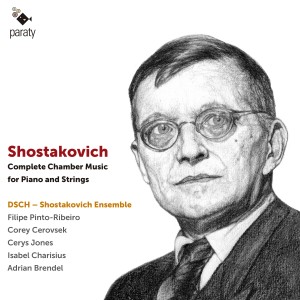
Complete Chamber Music Works for Piano and Strings by Dmitri Shostakovich
While underlining Dmitri Shostakovich’s importance in the history of music, the musicologist Lev Mazel wrote: ‘if human culture does not die out, the life and personality of Dmitri Shostakovich will be studied in depth for centuries and centuries. Just as every detail concerning Beethoven attracts the attention not only of specialists, but a great number of layman, every detail of the life and work of Shostakovich will be of interest to posterity’. So, what do we know of the life of Shostakovich? That it was full, agitated, under constant public judgement and without any slowing of creative output until the end. A few friends and family members could experience an image of him as an engaged citizen assuming his civic responsibilities but also, most importantly, an image of a citizen engaged with and devoted to his art like few others. This image began to be modified after his death as soon as his memoires, journals and diaries started to be published, a process which increased and developed during the post-Soviet era. This contributed to a re-evaluation of Shostakovich during the period following the Cold War and, more generally, of the whole phenomenon of Soviet culture. The posthumous reception of Shostakovich and his music, beyond expanded recognition of his artistic value, became the object of unflagging fascination on the part of musicians, musicologists, journalists and the general public. Even today, we witness great debates on the extra-musical content of his work, particularly the autobiographical fingerprint that Shostakovich explicitly inscribed in certain pieces –for example, his eighth String Quartet, the tenth Symphony, the first Concertos for Violin and Cello and the Sonata for Violin and Piano–, by imposing an occult musical signature. The famous musical motif DSCH which corresponds to the first letters of his first and last names, which correspond to musical note names in German: Dmitri (S)CHostakovitch = DSCH = D, E flat, C, B. On 5 January 1944, Dmitri Shostakovich wrote in a letter to Antal Molnár: ‘Chamber music requires of the composer the most perfect technique and the greatest depth of thought. I would not be too far from the truth if I affirmed that, sometimes, behind the “sparkle” of the orchestral sound is hidden a lack of imagination. Composing chamber music pieces is, for me, significantly more difficult than composing orchestral works…a lack of depth in the thought process in chamber music is simply intolerable’. [….]
Filipe Pinto-Ribeiro

 DSCH – Schostakovich Ensemble
DSCH – Schostakovich Ensemble
